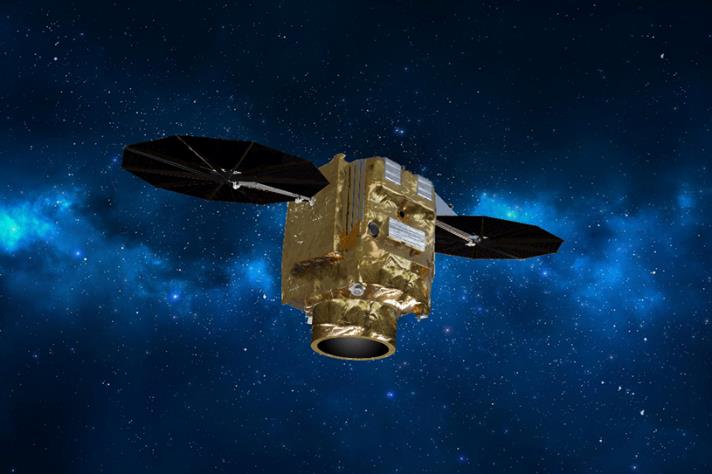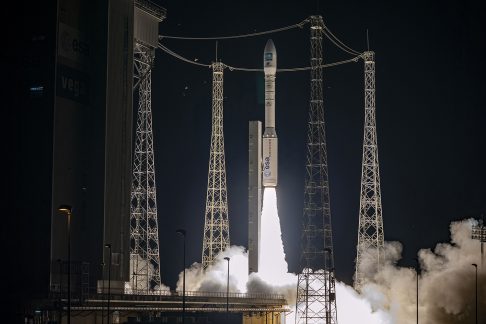
Pléiades Neo 4
image: Arianespace
The high resolution Earth observation constellation satellite Pléiades Neo 4 was successfully launched this dawn from the 16th to the 17th. The responsible company was Arianespace, from French Guiana, and its manufacturer, Airbus Defense and Space. The launch was done from a Vega rocket, so five satellites were launched into a 620 km Sun-synchronous orbit. See the video on external link 1 below.
The satellite will synchronize 180° with Pléiades Neo 3 in the same orbit to start forming a constellation. This will allow you to take daily images from anywhere on Earth with a native resolution of 30 cm, and between two to four times a day when the constellation of four observation satellites is complete (BRO-4 [from Unseen Labs], Sunstorm, Ledsat and Radcube [from the European Space Agency, ESA]).

Vega launch, on the mission called VV19, 16 august
image: Arianespace
"Pléiades Neo will provide best-in-class capability to our customers and will significantly enhance our position in the ultra-high resolution market," said François Lombard, head of intelligence for Airbus Defense and Space.
The satellites will be placed in orbit so that they pass over a specific point on Earth each day, generating a high-resolution image (30 cm). Together, the highly agile satellites can cover the entire surface of the Earth five times a year.
"The first images of Pléiades Neo 3 are exceptional and confirm that we made the right choice in terms of design and performance to meet the increasingly demanding requirements of the geospatial industry," he concluded.
"I would like to congratulate all teams involved in the success of this second Vega launch in 2021. With this mission, Arianespace demonstrates once again the incredible versatility of Vega: we safely place the second satellite of the innovative Pleiades Neo 4 constellation into orbit on behalf of from Airbus, along with four auxiliary CubeSats for ESA and start-up French Unseenlabs More than ever, Vega is a key pillar of autonomous access to space for Europe, allowing the benefits of space to expand to Earth ”, said Stéphane Israël, CEO of Arianespace.
The Italian Ledsat satellite is developed by the University of Sapienza and the Italian Space Agency. The objective is to investigate the performance of a technology based on light emitting diodes (LED) for optical tracking of satellites in short earth orbit.
The BRO-4 (Breizh Reconnaissance Orbiter) satellite is a part of a constellation whose objective is to intercept radio frequency signals from space. It will be used for maritime transport surveillance.
Sunstorm has a solar X-ray spectrometer to detect X-ray pulses released in coronal mass ejection, which cause so-called “solar storms”, which can disrupt communications on Earth.
Radcube will be able to demonstrate miniaturized instrumentation technology in order to measure the level of local space radiation and the magnetic field in low Earth orbit with the aim of monitoring the space “weather”.
Text based on the article on the actualidadaeroespacial.com portal (it can be accessed through external link number 2).


 Rafael Ramos
Rafael Ramos
Aviation enthusiast from an early age, he had his first contacts with the area developing that good old habit of spending dozens of hours in front of the screens of Micrsoft Flight Simulator and other simulators. With a solid background in various technological areas, including engineering and chemistry, Rafael has rejoined aviation as editor and author of articles and materials on our portal, providing invaluable help to the dynamics and expansion of the website and the aeronautical community, bringing us the news and updates so indispensable for us to remain current in our area of operation.
   
|
